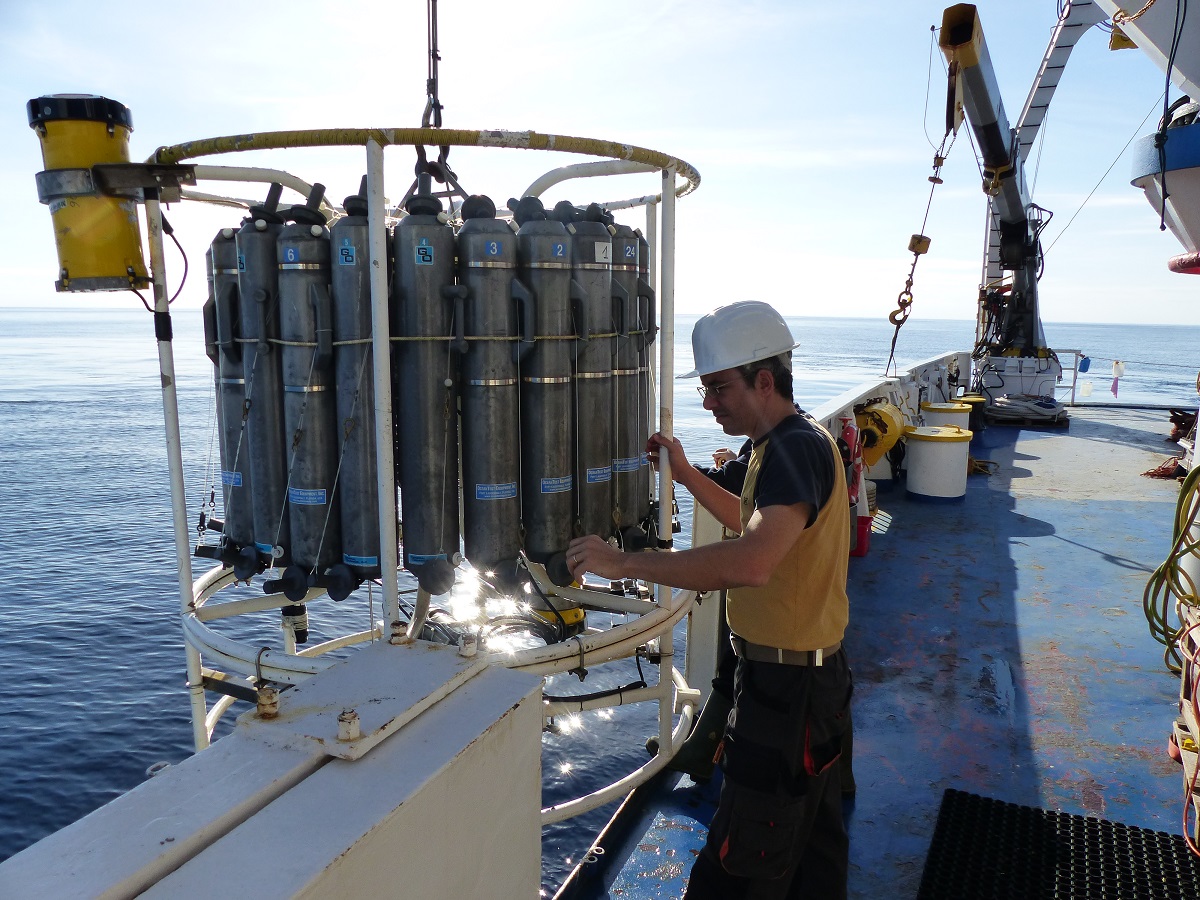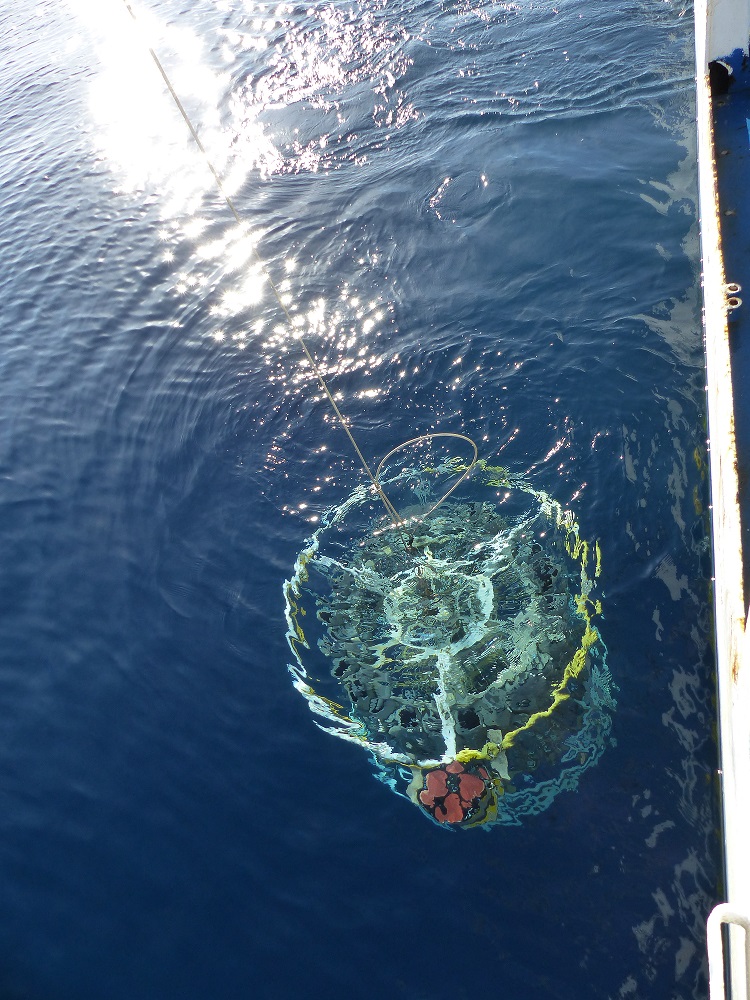COMMON SENSE Resources for European Marine Monitoring
 The COMMON SENSE project has successfully finished after 40 months of in-depth research and continual development of marine sensors and systems. The EU-funded project started in November 2013 and ran until February 2017 with a focus on developing specific sensors in direct response to current marine monitoring challenges, and the requirement of EU Member States in meeting their Marine Strategy Framework Directive (MSFD) requirements and achieving Good Environmental Status (GES) of their marine territories.
The COMMON SENSE project has successfully finished after 40 months of in-depth research and continual development of marine sensors and systems. The EU-funded project started in November 2013 and ran until February 2017 with a focus on developing specific sensors in direct response to current marine monitoring challenges, and the requirement of EU Member States in meeting their Marine Strategy Framework Directive (MSFD) requirements and achieving Good Environmental Status (GES) of their marine territories.
The COMMON SENSE project was a great success, with significant progress made to improve marine data acquisition using sensors to contribute towards increasing the availability of standardised data on: eutrophication; concentrations of heavy metals; microplastic fraction within marine litter; underwater noise; and other parameters such as temperature, pH, pCO2 and pressure.
The progress achieved by the project partners is impressive, with the majority of the sensors moving from a technology readiness level (TRL) of 2-3 up to 6-7, with one sensor now at TRL 8 – the Mini Sea Sampling System. While commercialisation of these sensors is beyond the scope of the project as it has finished, interested stakeholders are welcomed, and encouraged to engage with COMMON SENSE partners to ensure the sensors are brought to market. In many cases, partners have committed to continuing the work in COMMON SENSE in order to do so.
To optimise the exploitation potential of the COMMON SENSE project’s generated knowledge, the partners incorporated an in-depth communication, dissemination and knowledge transfer strategy from the very beginning of the project. Several different resources are available to stakeholders, which will allow them to understand exactly what the knowledge is, and how it could be applicable to them. From an industrial point of view, sensor profiles were developed as technical briefs, outlining the technical specifications and highlights of each sensor. These are available to download from the COMMON SENSE website’s media section. Also, the project carried out a feasibility analysis and have outlined manufacturing procedures for each sensor, providing in-depth information on how the sensors can be reproduced and brought to market.
 The COMMON SENSE outreach in general was enthusiastically taken on board by all partners from an early stage, in recognition of the need to raise awareness of progress and results of the project on an ongoing basis. To this end, regular factsheets were developed, published and widely disseminated. As well as an introductory factsheet developed at the start of the project to introduce stakeholders to the COMMON SENSE project, its objectives, methodology and expected impacts, three other factsheets provided information on important aspects of the project, such as: how COMMON SENSE sensors will contribute to improving marine monitoring and marine data management including an infographic that shows the project development timeline alongside a timeline for MSFD implementation; introductory detail on each of the innovative sensors under development by COMMON SENSE including the description of how the sensors could work together on one platform through the smart sensor unit and common sensor platform whose goal was to collect data from multiple sensors; detail on the deployment and testing activities carried out by partners to ensure developed sensors were fit for purpose and to identify areas which required further modification. Significant effort was expended in these activities, with all sensors being tested a multiple of times at different locations and using different platforms.
The COMMON SENSE outreach in general was enthusiastically taken on board by all partners from an early stage, in recognition of the need to raise awareness of progress and results of the project on an ongoing basis. To this end, regular factsheets were developed, published and widely disseminated. As well as an introductory factsheet developed at the start of the project to introduce stakeholders to the COMMON SENSE project, its objectives, methodology and expected impacts, three other factsheets provided information on important aspects of the project, such as: how COMMON SENSE sensors will contribute to improving marine monitoring and marine data management including an infographic that shows the project development timeline alongside a timeline for MSFD implementation; introductory detail on each of the innovative sensors under development by COMMON SENSE including the description of how the sensors could work together on one platform through the smart sensor unit and common sensor platform whose goal was to collect data from multiple sensors; detail on the deployment and testing activities carried out by partners to ensure developed sensors were fit for purpose and to identify areas which required further modification. Significant effort was expended in these activities, with all sensors being tested a multiple of times at different locations and using different platforms.
A project video was also created, which quickly explains the project and its relevance to marine monitoring policies across Europe, using a mixture of real footage and animations. The video is available to view online at https://vimeo.com/201643243 or through the COMMON SENSE website.
The COMMON SENSE project closed with a final partner meeting and demonstration event in Barcelona at the end of January 2017. The Coordinator, Sergio Martinez of LEITAT, expressed his appreciation for the efforts of each partner and congratulated the consortium on their achievements, saying:
“Tomorrow has arrived, now at the project end the proposal vision has come true, our objectives have materialised and the results are widely visible; we looked at the requirements of next generation sensors, including measuring new pollutants and increasing performance and compared them to existing sensors, to develop cost-effective solutions, transferring acquired data to an interoperable web platform. We tested and deployed our marine sensors and systems with exciting and hopeful results. Some sensors are now advanced prototypes, others require further validation. A mission for COMMON SENSE partners now is to continue with the legacy of the project, to keep working on these innovative marine solutions, reach the market, and help society by contributing to the realisation and maintenance of good environmental status in all EU Member States”.
The results of the COMMON SENSE project can be used to increase knowledge of the marine environment and access to related data, allowing strategic decisions to be taken in marine protection and conservation. It will also help to support EU policies (MSFD / CFP) by providing multifunctional, innovative and cost-effective sensors that are easy to use across a range of platforms to detect reliable measurements on key parameters by means of methodological standards that interoperate with, existing or new, international observing services. All COMMON SENSE resources are available to download from the COMMON SENSE website, www.commonsenseproject.eu, or by contacting WP10 Leader Cliona Ní Cheallachain of AquaTT, or the project coordinator Sergio Martinez of Leitat (smartineznavas@leitat.org).